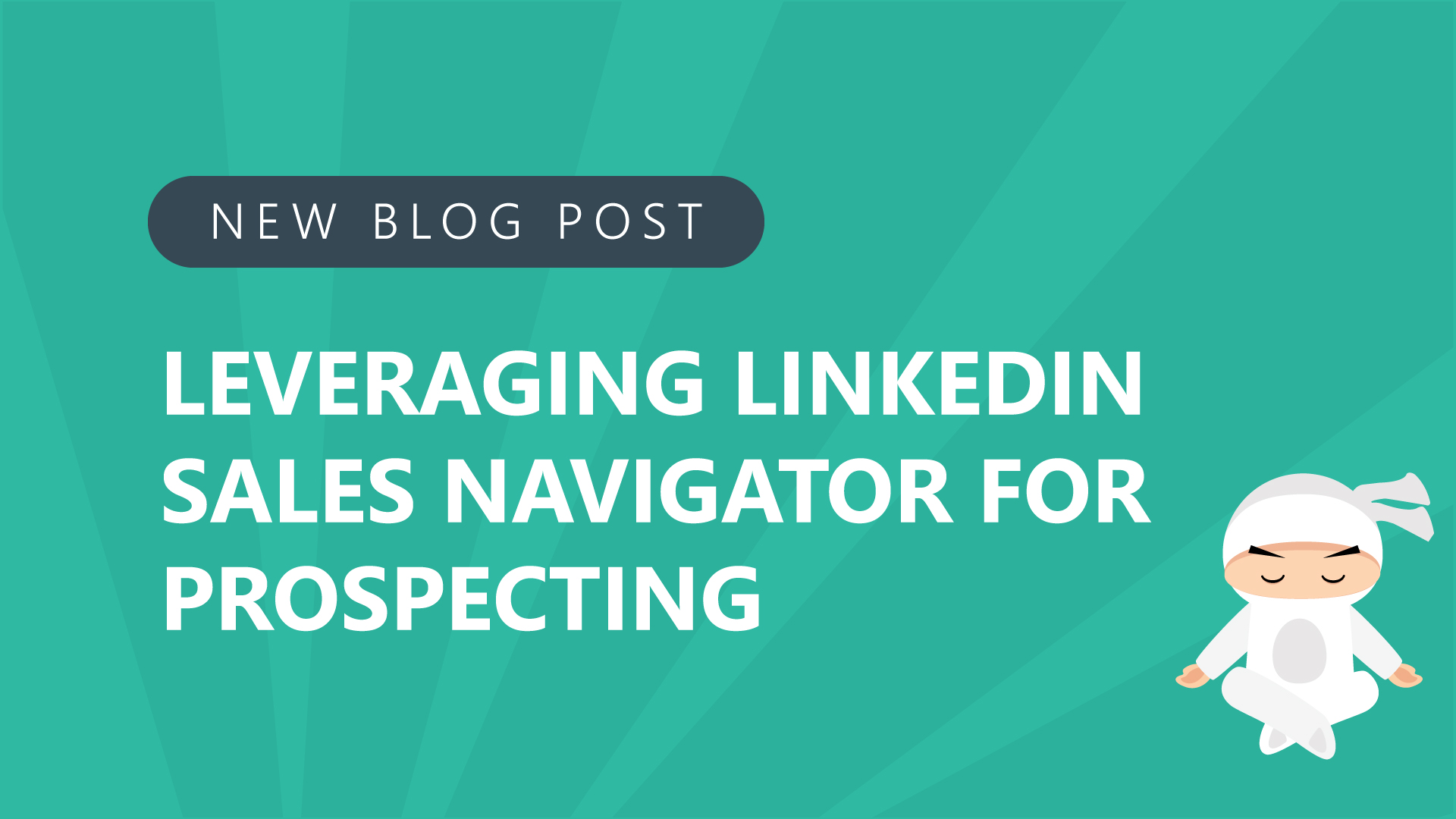Donald Kelly started working in B2B sales in college but found more success in B2C. When he decided to transition back to B2B, he said he was “Kicked in the face.” He didn’t know what he was doing.
Luckily, the company he was working for put him through some training, which changed everything for him. He had to share what he’d learned. So he launched “The Sales Evangelist” brand.
Donald believes that sales can be complex but isn’t confusing once you know what to do. If you can master the fundamentals, you’ll always be able to thrive and succeed. Donald’s training organization helps salespeople focus on doing just that.
One of Donald’s prospecting processes uses LinkedIn’s Sales Navigator (which he outlines in Negotiations Ninja episode #417). But how do you break that process down further?
Breaking down Sales Navigator trigger points
For Donald and his company, new sales leaders (i.e. a VP of Sales) are the best target. The new VP of Sales is likely coming into a position because they are doing something better or different than the last person. They’re bringing a fresh new perspective to the organization. Donald wants to be part of the change they’re bringing to the table.
So, how does Donald use LinkedIn Sales Navigator’s tools to find a connection point? You can use Sales Navigator to find out what software a company currently uses. If they use a competitor’s product, you could share how your product is competitive. Perhaps using your product or service would be a great way for them to ignite change.
Use Sales Navigator to identify commonalities
One of Donald’s team members had identified someone who had started his own consultancy as a prospect. This person had recently posted an article that focused on getting results. His “About me” section was also results-focused.
So, their BDR crafted a connection request based on helping them achieve results. The guy accepted the request. When the BDR tried to go to the guy’s website, he got an error message. Instead of saying, “Your website isn’t working,” he said, “I love what you wrote about…” and then said, “P.S. I noticed LinkedIn has the wrong URL for your website.”
Then he sent an email also focused on getting results. The guy responded to the email complimented their BDR, and said, “I love the multi-touch approach.” The trigger was used throughout the messaging and bridged the gap between the problem he might be facing and the solution they offered.
The key is to grab their attention and engage them. Then, you start conversations, which lead to appointments. It leads to a much better overall experience.
It’s not the product, it’s the salesperson
Donald was recently visiting family in Jamaica. He woke early one morning because he heard someone yelling outside the house. There was a man outside selling limes. He was chasing cars and being funny and drawing a lot of attention.
When Donald sold mangoes as a kid, he hid behind his gate and wouldn’t approach people. He thought they would come to him. But he was selling the same mango everyone else sold. Why would they seek him out?
Successful people do things differently. Most B2B sellers sit behind a gate and hope people will learn about them. They blast out emails and randomly cold-call people. They’re lacking a strategic and engaging approach
But when they transition to a non-traditional prospecting process and break through the noise, they become memorable, grab attention, and differentiate themselves. Learn more about how to make that happen in episode #417 of Negotiations Ninja!

